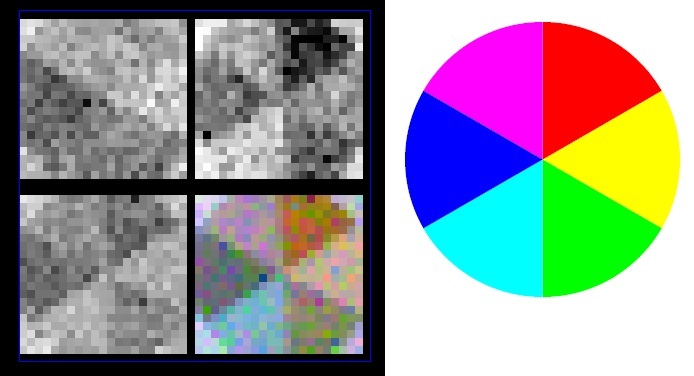Color detection using bio-inspired vision sensors has been rare so far. There have been several attempts leading to the develop of dicromatic AER vision sensors capable of detecting two colors: red and blue, or the transitions between these two colors.
In this project, we are more ambitious and we try to generate real RGB images. This could be a step further on the develop of AER vision sensors and make them more competitive and marketable. Traditional frame-based devices detect color using color filters over the pixels. They achieve good image quality, but the area requirements are high. They usually use four pixels (Red, Green, Green, and Blue) to detect color with the same sensitivity than the human eye. In this project, we follow a new approach proposed for Foveon to detect color based on the silicon color absorption properties. In our project, color is detected with photodiodes stacked at different depths. Each photodiode is sensitive to a different wavelength.
This project is being done at the University of Oslo (UiO) A 22x22 pixel color AER sensor has been designed and is being tested in our labs.
In the figure, on the left, there is a conventional color detection squeme with color filters. Green filter appear twice because the human eye is more sensitive to green light. On the right, we can see the silicon color absorption scheme. At low depths, blue color is absorbed. For higher wafer dephs, the red color is absorbed. Placing photodiodes at different depth, color detection can be done.
On the top, we can see the sensor response to the primary colors and the combinations of them, when stimated with the pattern of the right. On the left, we display the ouputs of each channel (red, blue and green) from the top to the bottom, left to right. On the right bottom corner, the sensor output is shown combining the three color channels.
Selected Project Publications
Back

